|
|
General: EL PAPA FRANCISCO ELEVA LA MEMORIA EN MARIA MAGDALENA
Elegir otro panel de mensajes |
|
|
Pope elevates memorial of St. Mary Magdalene to feast day

VATICAN CITY (CNS) -- Recognizing St. Mary Magdalene's role as the first to witness Christ's resurrection and as a "true and authentic evangelizer," Pope Francis raised the July 22 memorial of St. Mary Magdalene to a feast on the church's liturgical calendar, the Vatican announced.
A decree formalizing the decision was published by the Congregation for Divine Worship June 10 along with an article explaining its significance.
Both the decree and the article were titled "Apostolorum Apostola" ("Apostle of the Apostles").
In the article for the Vatican newspaper, Archbishop Arthur Roche, secretary of the congregation, wrote that in celebrating "an evangelist who proclaims the central joyous message of Easter," St. Mary Magdalene's feast day is a call for all Christians to "reflect more deeply on the dignity of women, the new evangelization and the greatness of the mystery of divine mercy."
"Pope Francis has taken this decision precisely in the context of the Jubilee of Mercy to highlight the relevance of this woman who showed great love for Christ and was much loved by Christ," Archbishop Roche wrote.
While most liturgical celebrations of individual saints during the year are known formally as memorials, those classified as feasts are reserved for important events in Christian history and for saints of particular significance, such as the Twelve Apostles.
In his apostolic letter "Dies Domini" ("The Lord's Day"), St. John Paul II explained that the "commemoration of the saints does not obscure the centrality of Christ, but on the contrary extols it, demonstrating as it does the power of the redemption wrought by him."
Preaching about St. Mary Magdalene, Pope Francis highlighted Christ's mercy toward a woman who was "exploited and despised by those who believed they were righteous," but she was loved and forgiven by him.
Her tears at Christ's empty tomb are a reminder that "sometimes in our lives, tears are the lenses we need to see Jesus," the pope said April 2, 2013, during Mass in his residence, the Domus Sanctae Marthae.
Pope Francis also mentions her specifically in the prayer he composed for the Year of Mercy: "Your loving gaze freed Zacchaeus and Matthew from being enslaved by money; the adulteress and Magdalene from seeking happiness only in created things; made Peter weep after his betrayal, and assured paradise to the repentant thief."
Archbishop Roche explained that in giving St. Mary Magdalene the honor of being the first person to see the empty tomb and the first to listen to the truth of the resurrection, "Jesus has a special consideration and mercy for this woman, who manifests her love for him, looking for him in the garden with anguish and suffering."
Drawing a comparison between Eve, who "spread death where there was life," and St. Mary Magdalene, who "proclaimed life from the tomb, a place of death," the archbishop said her feast day is a lesson for all Christians to trust in Christ who is "alive and risen."
"It is right that the liturgical celebration of this woman has the same level of feast given to the celebration of the apostles in the general Roman calendar and highlights the special mission of this woman who is an example and model for every woman in the church."
- - -
Follow Arocho on Twitter: @arochoju.
|
|
|
|
|
Mary Magdalene Feast Day July 22nd
July means Mary Magdalene Day is coming!
July 22nd in centuries-old church tradition is considered Magdalene’s birthday and Feast Day. She is the only woman in history about whom Jesus said, “people will tell this story in memory of her”. The story Jesus meant is the story of Magdalene anointing his head and feet as if for burial, but symbolizing the anointing him as messiah. Messiah is a word meaning “anointed one” and she is the only person in the Bible who anoints him. You recall the rest of the story when she weeps and dries his feet with her hair.
In June 2016 the Pope finally declared July 22nd to be Magdalene’s special Feastday again (in the 1960s they had demoted her holiday but people still celebrated it)
Margaret Starbird writes:
The Pope’s recent pronouncement declares Mary Magdalene about equivalent with the Apostles, but we should not be satisfied until she is acknowledged as the Sacred Partner—Bride and Beloved—of Christ. If you have read my “Mary Magdalene, Bride in Exile,” the epilogue expresses my position: “Who do we say she is?” Until Mary Magdalene is proclaimed as the true partner and co-Redemptrix with Christ, my work is not done. It thrills me to know that other, younger women understand this need to balance the masculine energy, stripped of its feminine partner—and are willing to carry on the effort to enlighten others.
 Jesus & Magdalene portrayed as married and pregnant. 19th Century Scottish Church
The Book of Revelation ends with the Nuptials of the Lamb and his Bride—a union of the Masculine and Feminine—Lord and Lady of our hearts, as in the “marriage window” from the Dervaig Kilmore chapel [pictured right] —a union of archetypes that causes streams of living water to flow from the throne of God– “for the healing of the nations.”
So, in light of the honor that should have been hers for two millennia, proclaiming her feast day “official” is not nearly enough for me! But I love the Pope for taking this small step in the right direction.
I hope you are aware of my two best arguments for Mary as “Bride”: Micah 4:8-11 -The Magdal-eder prophecy which sums up her post-Crucifixion fate in four lines, and the sacred number of the “153 fishes,” a metaphor for the Church as “Bride” in John 21. The gematria of “H Magdalhnh”–153—is also associated with the vesica piscis and goddesses of love and fertility. I consider these two discoveries that prove the the authors of the Gospels acknowledged Mary Magdalene as the consort of Christ as my most important contributions to the Magdalene “unveiling.”
In memory of her—
Margaret
“The Woman with the Alabaster Jar”
www.margaretstarbird.net
Pope Francis Restores Magdalene’s Feast Day
Gabriele shared the following Catholic News Service article with our GoddessChristians forum
Things definitely seem to be moving in the right direction!
~~~~~~~~~~~~~~~~~~~~~~~~~~~~~
http://www.catholicnews.com/services/englishnews/2016/pope-elevates-memorial-of-st-mary-magdalene-to-feast-day.cfm
Pope elevates memorial of St. Mary Magdalene to feast day
By Junno Arocho Esteves Catholic News Service
June 10, 2016
VATICAN CITY (CNS) — Recognizing St. Mary Magdalene’s role as the first to witness Christ’s resurrection and as a “true and authentic evangelizer,” Pope Francis raised the July 22 memorial of St. Mary Magdalene to a feast on the church’s liturgical calendar, the Vatican announced.
A decree formalizing the decision was published by the Congregation for Divine Worship June 10 along with an article explaining its significance.
Both the decree and the article we re titled “Apostolorum Apostola” (“Apostle of the Apostles”).
In the article for the Vatican newspaper, Archbishop Arthur Roche, secretary of the congregation, wrote that in celebrating “an evangelist who proclaims the central joyous message of Easter,” St. Mary Magdalene’s feast day is a call for all Christians to “reflect more deeply on the dignity of women, the new evangelization and the greatness of the mystery of divine mercy.”
“Pope Francis has taken this decision precisely in the context of the Jubilee of Mercy to highlight the relevance of this woman who showed great love for Christ and was much loved by Christ,” Archbishop Roche wrote.
While most liturgical celebrations of individual saints during the year are known formally as memorials, those classified as feasts are reserved for important events in Christian history and for saints of particular significance, such as the Twelve Apostles.
In his apostolic letter “Dies Domini” (“The Lord’s Day”), St. John Paul II explained that the “commemoration of the saints does not obscure the centrality of Christ, but on the contrary extols it, demonstrating as it does the power of the redemption wrought by him.”
Preaching about St. Mary Magdalene, Pope Francis highlighted Christ’s mercy toward a woman who was “exploited and despised by th ose who believed they were righteous,” but she was loved and forgiven by him.
Her tears at Christ’s empty tomb are a reminder that “sometimes in our lives, tears are the lenses we need to see Jesus,” the pope said April 2, 2013, during Mass in his residence, the Domus Sanctae Marthae.
Pope Francis also mentions her specifically in the prayer he composed for the Year of Mercy: “Your loving gaze freed Zacchaeus and Matthew from being enslaved by money; the adulteress and Magdalene from seeking happiness only in created things; made Peter weep after his betrayal, and assured paradise to the repentant thief.”
Archbishop Roche explained that in giving St. Mary Magdalene the honor of being the first person to see the empty tomb and the first to listen to the truth of the resurrection, “Jesus has a special consideration and mercy for this woman, who manifests her love for him, looking for him in the garden with anguish and suffering.”
Drawing a comparison between Eve, who “spread death where there was life,” and St. Mary Magdalene, who “proclaimed life from the tomb, a place of death,” the archbishop said her feast day is a lesson for all Christians to trust in Christ who is “alive and risen.”
“It is right that the liturgical celebration of this woman has the same level of feast given to the celebration of the apostles in the general Roman calendar and highlights the special mission of this woman who is an example and model for every woman in the church.”
Time to allow women to be Ordained Priests?
One of our other members, Klaus M. in Germany posted after hearing the news:
After Franziskus’ “Magdalenian decision”:
The next step now should to be allow women becoming priestesses in the RCC!
For those who are interested to read the Magdalene elevation in German:
http://www.northernway.org/weblog/?p=1213 |
|
|
|
|
There has been a tremendous amount of internet buzz and speculation regarding the dates of 9/23 and 9/24/2015. Some Christian groups were predicting the rapture. Others were predicting a major ISIS terrorist attack. Still others were expecting an assassination attempt on either Obama or the Pope. WW III, asteroid strikes, and EMPs were among the other candidates. The UFO crowd expected the Pope to finally disclose contact with extra-terrestrials. It is now 9/26 and the theatrics expected on 9/23 have been underwhelming to say the least. Nevertheless there was some highly significant symbolism occurring on the 23rd/24th day of September and I want to expound upon it here.
First of all, the Roman Catholic Church has never been primarily about Jesus or elevating the level of human consciousness on Spaceship Earth. It has always been about power and control over the rabble through the use of symbolism and mythology rooted in ancient astro-theological Solar/Saturn/Sirius cults going back through Egypt and Babylon. I will provide a few examples of the connections between Roman Catholic symbols and their ancient predecessors.
The Pope is often seen wearing the “Mitre” which symbolizes the open mouth of a fish. Fish symbolism is everywhere in Christianity and it is not just because the disciples were fishermen and Jesus made them “fishers of men”. Christianity began at the end of the age of Aries (the Ram) and the beginning of the age of Pisces (the Fish). When Jesus talks about “the end of the age”, this refers to the procession of the equinox through the zodiac which indicates the astrological “age”. These ages last about 2160 years so we are currently transitioning from the end of the age of Pisces to the beginning of the age of Aquarius. The Roman Catholic Church is therefore predictably beginning to abandon the Jesus fish for some new arrangement of deities or a new “Good Shepherd” that will be used to goad the sheeple into their pens throughout the Age of Aquarius.

But anyway… back to the Pope’s fish hat (Cardinals also wear them at times):
  
The fish hat was also worn prior to Christianity by the priests of Dagon. Dagon was a fish god and also a god of the harvest to the ancient Babylonians and Philistines. Cronus (to the Greeks) or Saturn (to Romans) was also a god of the harvest and we often see him with a scythe or sickle. Put them together and we have the fishes and the loaves. Dagon may also be related to Dogon and Sirius worship which had a special symbolism to Egyptians relating to the time of year when the Nile would flood. Sirius being in the constellation of Canis Major relates it to the Canine while the relation to Dogon or Dagon is probably how canines came to be called dogs. Dogon may also be related to the etymology of the Dragon. To this day we still call late summer, “The dog days of summer” thanks to Dogon or Dagon and Sirius’s signalling the waters of the Nile to flood.
Anyway… The Pope’s fish hat is related to Dagon or Dogon and astro-theological pre-Christian deities.
 
The fish hat is just one example of symbolism relating back to pre-Christian deities, but in the interests of time and space I’ll move on to symbolism more relevant to the Pope’s recent visit to D.C. on 9/23 and 9/24.
One of the most amazing and prominent architectural wonders of the Vatican is Saint Peter’s Basilica with its 448′ tall dome designed primarily by Bramante and Michelangelo. The basilica faces East to greet the rising sun and to its East is an elliptical plaza with an Egyptian Obelisk in the center. The Obelisk was transported from Egypt and re-erected in Rome around 37 AD.

Saint Peter’s Basilica and Plaza with Obelisk, Vatican, Rome

Saint Peter’s Basilica and Plaza with Obelisk, Vatican, Rome
Where else do we find the “male” obelisk inside the round “female” shape across from a very large dome? …Washington D.C.

Washington Monument due West of the Capitol dome
So whats this all about? Just some old men acting like little boys who think it’s funny to draw body parts on the etcha-sketch? The story goes back to Sun worship in Egypt. Osiris was the old chief Sun god whose brother Set kills him at the end of the day (sun-set). As the legend goes, Set dismembers the body of Osiris and scatters his parts around the world. Isis, the Queen and wife of Osiris finds all of the pieces of Osiris’s body except for one member… his “member” which was unfortunately swallowed by a fish. So Isis fashions a new “gold member” for Osiris bringing him back to life. They have the sex and Horus is conceived – a baby sun god. (we probably get “hours” of the day from “Horus”). Isis, the virgin mother and pre-Madonna, is frequently pictured nursing baby Horus, and in the Roman Catholic Church we often see the virgin Mary (Madonna) nursing the baby Sun/Son of God.


Isis nursing baby Horus and The Madonna holding baby Jesus
So it is no coincidence that the Pope’s schedule follows the itinerary of the tour of Madonna (who is a “Christianized” Isis) who performs this September just prior to the Pope at Washington D.C., Madison Square Garden, and Philadelphia – the city of Big Brotherly Love.
The Egyptian obelisk represents the phallus of Osiris and the ellipse or vesica pisces (belly of the fish) in this case represents… well it should be obvious… intercourse with Isis. The adjacent dome represents the womb or breast of Isis where a god is made and nursed. This is why the mosaic inside of the dome of St. Peter’s Basilica shows Jesus and the saints on their way to heaven at the top and also why the inside of the D.C. Capitol dome has a painting showing George Washington ascending to heaven which is titled “The Apotheosis of George Washington.” Apotheosis literally means to become a god.

Mosaic inside the dome of St. Peter’s Basilica. Saints and angels rise towards heaven.

“The Apotheosis of George Washington” painted inside the dome on the U.S. Capitol. The 72 inverted pentagrams may symbolize the 72 years it takes for 1 degree of procession of the equinox.
I have read that at certain times in history the Egyptians would conduct human sacrifices… usually of foreigners or slaves… and at these times they believed the God Osiris would enter the Obelisk and that the Pharoah who sat in an adjacent dome (womb of Isis) believed this would make him a god.
Okay, let’s get back to the Pope’s visit. This is the 266th Pope from the first – St. Peter. The Pope decided to arrive at Washington D.C. on 9/23 which happens to be the 266th day of the year. Why is that significant? On average, a woman is pregnant for 266 days before going into labor. In Genesis, it is said that labor pain is the first judgment God gave to mankind. The evening of 9/22 to the evening of 9/23 is 7/10 on the Jewish calendar which is the Day of Atonement. This was the day that God decided how he was going to judge a person for the rest of the year and on 7/11 he would issue that judgement. (Side note: SEPT-ember was originally the 7th month so 9/11 could be thought of as 7/11. And 9/11 in Roman numerals is IXXI which is a re-working of the sign of Saturn and was engraved in Jesuit rings for a time. Pope Francis is the first Jesuit Pope, so he is thus “Lord of the IXXI Rings” and therefore kind of like the eye of Sauron/Saturn between the twin towers… Oh and don’t forget tower 7… 7/11). This year, 9/23 also happened to be the fall equinox – which doesn’t mean much to modern man, but recall that the ancients (and modern secret societies) were all about the Sun worship. Fall equinox is thus symbolic of the time when the powers of darkness overcome the powers of the light. Thus, what is “birthed” on 9/24 is something wicked.
So on 9/23 the prez “basked in the glow” of the Pope. On 9/24 the Pope journeyed to the Capitol. At some point he was interrupted by an illegal immigrant child who managed to evade iron clad security (staged much?) waving a heart-wrenching letter describing how she didn’t want to be deported. The Pope stood in the Capitol, which is symbolically the womb of Isis where a god is conceived or where men become gods (the dome also happens to be currently in the middle of a remodel or “reformation”). The main theme of his visit and of his speech was that the Western world needs to welcome the foreign children (to be sacrificed to Osiris) newly delivered unto us. Of course, it is well known that some of these “migrant children” belong to the terrorist group named: ISIS (Islamic State of Iraq and Syria).

So there you have it. The pope’s visit and message is all about Isis and the birthing of the children of ISIS through labor pains of judgment in the fall as the Western borders fall. Anyone who’s been paying attention knows that it is a thinly veiled fact that the West created ISIS by giving weapons, training, and funds to moderate rebels (also known as Al-Qaeda) in order to topple the Assad regime in Syria and possibly to be the next big bogeyman that will force Westerners to continue giving up their civil liberties so that they may be lovingly integrated into the global community with a nice big hug from Big Brother. Isis is ISIS is made by the secret societies who revere Isis and are the hidden hand behind Western geopolitics.

Pope Francis, accompanied by members of Congress, waves to the crowd from the Speakers Balcony on Capitol Hill in Washington, Thursday, Sept. 24, 2015, after addressing a joint meeting of Congress inside. Doug Mills / The New York Times via AP, Pool))

Pope Francis addresses congress on 9/24/2015
Oh and in case anyone missed the irony / hypocrisy… here’s the walls that keep the poor migrant children out of the Pope’s obscenely wealthy little city-state:

Vatican Wall and Entrance

Vatican Walls
[censored]
A good quick run-down on the occult astro-theology of Saturn:http://youtu.be/ylyZ9gKySAg
More info on occult astro-theological symbolism in art and architecture:http://youtu.be/L777RhL_Fz4
|
|
|
|
|
|
| Reply |
Message 653 of 653 on the subject |
|
|
28/10="EXPERIMENTO FILADELFIA"
CRUZ=LETRA T DE TIEMPO
|
|
|
|
|
|
|
La verdad sobre María Magdalena: ¿fue una prostituta?

PD
Maria Magdalena (El Greco)
La Iglesia ya ha superado las confusiones históricas, pero la cultura popular se resiste...
Los evangelios presentan a María Magdalena como una discípula de Jesús, testigo presencial de su muerte en la cruz, y primera testigo de su resurrección.
En los cuatro evangelios hay doce referencias a ella, once de las cuales se vinculan directamente con la pasión y resurrección de Jesús. Sólo Lucas (8, 2-3) agrega el detalle de que “María, llamada la Magdalena” era la mujer a quien Jesús liberó de siete demonios. No se sabe nada más. Tampoco puede afirmarse que haya sido prostituta como se cree comúnmente.
Habiendo gozado del privilegio de ser la primera en contemplar el Resucitado, fue enviada por el mismo Jesús a anunciar a los apóstoles la buena noticia. Puesto que “apóstol” significa “enviado”, puede comprenderse, siguiendo este sentido, que tanto los padres de la Iglesia como Juan Pablo II la nombrasen con el apelativo de “apóstol de los apóstoles”.
La simpatía que recayó sobre María Magdalena, tanto en el cristianismo primitivo, como en el resto de la historia de la Iglesia, se refleja en la cantidad de templos dedicados a ella en Europa.
Entre la historia y la leyenda
Su conocida representación como “prostituta” o “pecadora arrepentida” no fue un plan de los apóstoles para desprestigiarla, como sostienen novelas esotéricas y pseudohistóricas, ya que ningún texto asevera cosa semejante. La errónea identificación con una pecadora arrepentida se originó recién en la Edad Media.
Fue a partir de una homilía de Pascua del papa Gregorio el Grande en el año 591, en la cual confundió a la pecadora arrepentida de Lc. 7,37, con María de Betania (Lc. ), y con María Magdalena de quien Jesús echa siete demonios (Lc 8,1), como si todas ellas fueran la misma mujer.
Muchos todavía confunden a María Magdalena con la pecadora arrepentida que aparece en el capítulo 7 de Lucas. Incluso se la confunde con la mujer adúltera que aparece en el evangelio de Juan (cap. 8), de la que tampoco sabemos su nombre.
A partir de ese momento, el lugar común de una María Magdalena prostituta, confundida con la pecadora arrepentida que aparece en el evangelio de Lucas, se extendió al arte, la predicación y la liturgia.
Sin embargo este error ya fue corregido hace décadas por teólogos católicos y por los últimos papas. En su fiesta litúrgica (22 de julio) se leen las lecturas de la escena junto al sepulcro de Jesús dándole relevancia como discípula enviada a testimoniar la fe en el Resucitado y no el texto sobre la pecadora arrepentida.
Refiriéndose al Papa que cometió este error de interpretación, la historiadora Katherine Ludwig Jansen escribe: “Sería un grueso error de interpretación histórica verlo como una conspiración o un acto malicioso de su parte. Uno debe ver a Gregorio en su contexto, un período caracterizado por intensas dislocaciones: invasiones germánicas, plaga, hambruna… el mundo romano se resquebrajaba bajo sus pies”, una época de gran incertidumbre, donde la figura de María Magdalena fue un icono de esperanza e identificación para los creyentes que pasaban “de pecadores a fieles discípulos”.
Las versiones gnósticas y New Age
A partir de muchas novelas pseudohistóricas y textos gnósticos se vuelve a proponer la versión de una relación “especial” de Jesús con María Magdalena, como si hubiera sido su esposa o su amante.
Pero los evangelios gnósticos, además de no poseer valor histórico sobre el cristianismo y ser muy posteriores a los evangelios canónicos, no hablan de ello más que un sentido simbólico y místico.
Los gnósticos tenían un gran desprecio por la mujer como un ser de segunda categoría frente al hombre y el único evangelio que habla de una relación especial entre Jesús y María Magdalena es el evangelio gnóstico de Felipe, pero lo hace para afirmar doctrinas gnósticas a través de la figura de Jesús.
A muchos lectores incautos les sedujo la idea de encontrarle una novia o esposa a Jesús, pero según las fuentes canónicas está claro que Jesús era célibe y que Magdalena tuvo un lugar destacado como discípula suya.
¿María Magdalena en el sur de Francia?
Es verdad que durante la Edad Media en Francia se creó una importante devoción en torno a la figura de María Magdalena y aparecieron leyendas alusivas a ella. Se construyeron así muchas Iglesias en su honor, aludiendo incluso a una tumba suya en Provenza en el siglo XIII.
La verdad es que no sólo no hay rastros de María Magdalena en Francia antes del siglo IX, sino que fueron puras invenciones.
En esa época surgió la leyenda que describe la llegada a Francia de Lázaro y sus hermanas Marta y María; pero esta María no es Magdalena, sino María de Betania. Con la confusión que las unió desde el siglo VI por la homilía del papa Gregorio en adelante, no es difícil que hayan colocado a María Magdalena dentro de esta leyenda.
Es conocido también el dato de que no hay rastros de cristianismo en esas zonas hasta comienzos del siglo III, razón por la cual ni Lázaro, ni ninguna María habría llegado a este lugar. El San Lázaro que se conoce en Francia es del siglo III y no es el mismo que el que aparece en la Biblia.
Toda la leyenda de María Magdalena en Francia es una construcción medieval que luego alimentó nuevas leyendas. Esto se entiende en un contexto medieval donde ante el avance musulmán muchos inventaron que tenían reliquias de santos para obtener protección y prestigio.
De forma similar, muchas historias sin fundamento se transformaron en Europa en devoción popular con el pasar de los siglos.
María Magdalena y la Iglesia
La Iglesia católica ha dejado de considerar a María Magdalena como una prostituta arrepentida, pero popularmente ha sido más difícil de erradicar esta idea que viene desde la Edad Media. Todavía se la ve así en películas cristianas y en publicaciones catequéticas.
En 1969 el papa Pablo VI retiró del calendario litúrgico el apelativo de “penitente” que se le adjudicaba tradicionalmente a María Magdalena y desde entonces dejaron de emplearse las lecturas de la liturgia de su día que se referían a la pecadora arrepentida y comenzaron a utilizarse los textos que se refieren estrictamente a ella en los evangelios.
Juan Pablo II en la carta Mulieris Dignitatem se refirió a ella como la “apóstol de los apóstoles”, título que ya usaban los padres de la Iglesia en los primeros siglos y la describió como una de esas “mujeres que demostraron ser más fuertes que los apóstoles” en el momento de la crucifixión, permaneciendo al lado de Jesús.
Recientemente, el 10 de junio de 2016, la Santa Sede ha elevado por decreto la memoria de santa María Magdalena a grado de fiesta en el Calendario Romano General.
https://es.aleteia.org/2017/05/24/la-verdad-sobre-maria-magdalena-fue-una-prostituta/
|
|
|
|
|
Location
Montségur is in the Ariege, in the foothills of the Pyrenees, not far from Lavelanet, due South from Mirepoix.
Montségur lies at 42°52'35" N, 1°49'51" E on a pog (a volcanic pluton) at an altitude of 1,207 meters. The castle is owned by the Commune of Montségur. There is an entrance fee, which also covers entry to a museum in the nearby town.
Guided Tours
Cathar Castle Tours
Mairie: mairie.montsegur@wanadoo.fr
Tel: 05 61 0110 27
Tourist Information Office:
Tel: 05 61 03 03 03

|
|
aerial view of Montségur
|
 |
|
MARIA MAGDALENA EN EL CATARISMO (CATAROS)
25 DE ABRIL=DIA DE SAN MARCOS
22 DE JULIO=DIA DE MARIA LA MAGDALENA
|
|
|
|
|
María Magdalena
Ir a la navegaciónIr a la búsqueda
«La Magdalena» redirige aquí. Para otras acepciones, véase Magdalena. María Magdalena (en hebreo: מרים המגדלית; en griego antiguo: Μαρία ἡ Μαγδαληνή) es mencionada, tanto en el Nuevo Testamento canónico como en varios evangelios apócrifos, como una distinguida discípula de Jesús de Nazaret. Su nombre hace referencia a su lugar de procedencia: Magdala, localidad situada en la costa occidental del lago de Tiberíades y aldea cercana a Cafarnaúm. Es considerada santa por la Iglesia católica, la Iglesia ortodoxa y la Comunión anglicana, que celebran su festividad el 22 de julio. Reviste una especial importancia para las corrientes gnósticas del cristianismo. En 1988, el papa Juan Pablo II en la carta Mulieris Dignitatem se refirió a ella como la "apóstol de los apóstoles", y el 10 de junio de 2016, la Congregación para el Culto Divino y la Disciplina de los Sacramentos publicó un decreto por el cual se eleva la memoria de santa María Magdalena al grado de fiesta en el Calendario romano general,1 por expreso deseo del papa Francisco.23
|
|
|
|
|
|
|
|
| Hechos 12:12: |
Y habiendo considerado esto, llegó a casa de María la madre de Juan, el que tenía por sobrenombre Marcos, donde muchos estaban reunidos orando. |
| Hechos 12:12: |
Y habiendo considerado esto, llegó a casa de María la madre de Juan, el que tenía por sobrenombre Marcos, donde muchos estaban reunidos orando. |
| Hechos 12:10: |
Habiendo pasado la primera y la segunda guardia, llegaron a la puerta de hierro que daba a la ciudad, la cual se les abrió por sí misma; y salidos, pasaron una calle, y luego el ángel se apartó de él. |
| Apocalipsis 2:27: |
y las regirá con vara de hierro, y serán quebradas como vaso de alfarero; como yo también la he recibido de mi Padre; |
|
|
|
|
|
|
Magdalena: Francisco orará ante monumento de la Virgen María
El Santo Padre también recibirá las Llaves de la Ciudad de parte de un comité de alcaldes de Lima, antes de iniciar su recorrido en el papamóvil
https://elcomercio.pe/lima/sucesos/magdalena-francisco-orara-monumento-virgen-maria-noticia-489551-noticia/ |
|
|
|
|
Franciscan Chapel of Mary Magdalene (Holy Sepulchre)
On the north side of the Rotunda, the hall of the tomb, is the Franciscan Chapel of Mary Magdalene. Mary of Magdala (Migdal) accompanied Jesus on his way to the cross and burial.
Overview
This picture shows the pavement of the Chapel of Mary Magdalene, dedicated to the encounter between Mary Magdalene and Jesus. The pavement is a modern copy of the original floor from the 11th century. It consists of two circular sectors indicating the positions, at the time of their encounter, of Jesus, at the point encircled by rays, and Mary Magdalene, at the center of three circles.
Gallery
|
|
|
 Primer
Primer
 Anterior
2 a 16 de 31
Siguiente
Anterior
2 a 16 de 31
Siguiente Último
Último
|
|
| |
|
|
©2025 - Gabitos - Todos los derechos reservados | |
|
|
 Jesus & Magdalene portrayed as married and pregnant. 19th Century Scottish Church
Jesus & Magdalene portrayed as married and pregnant. 19th Century Scottish Church





























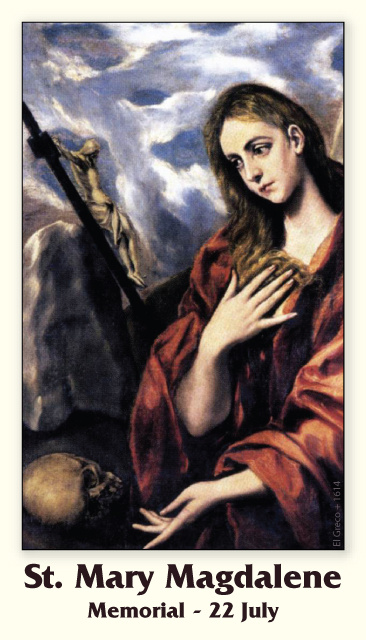











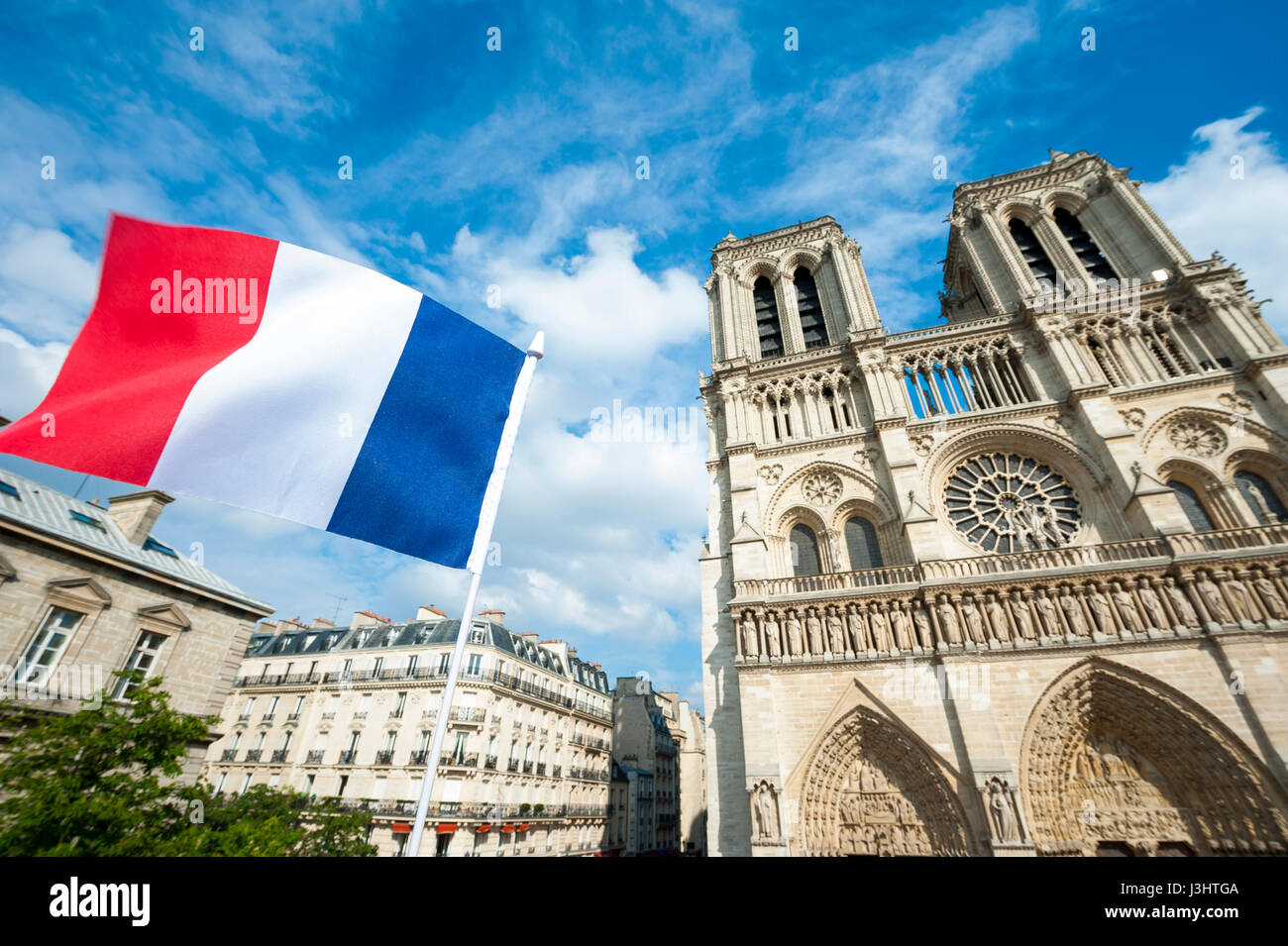












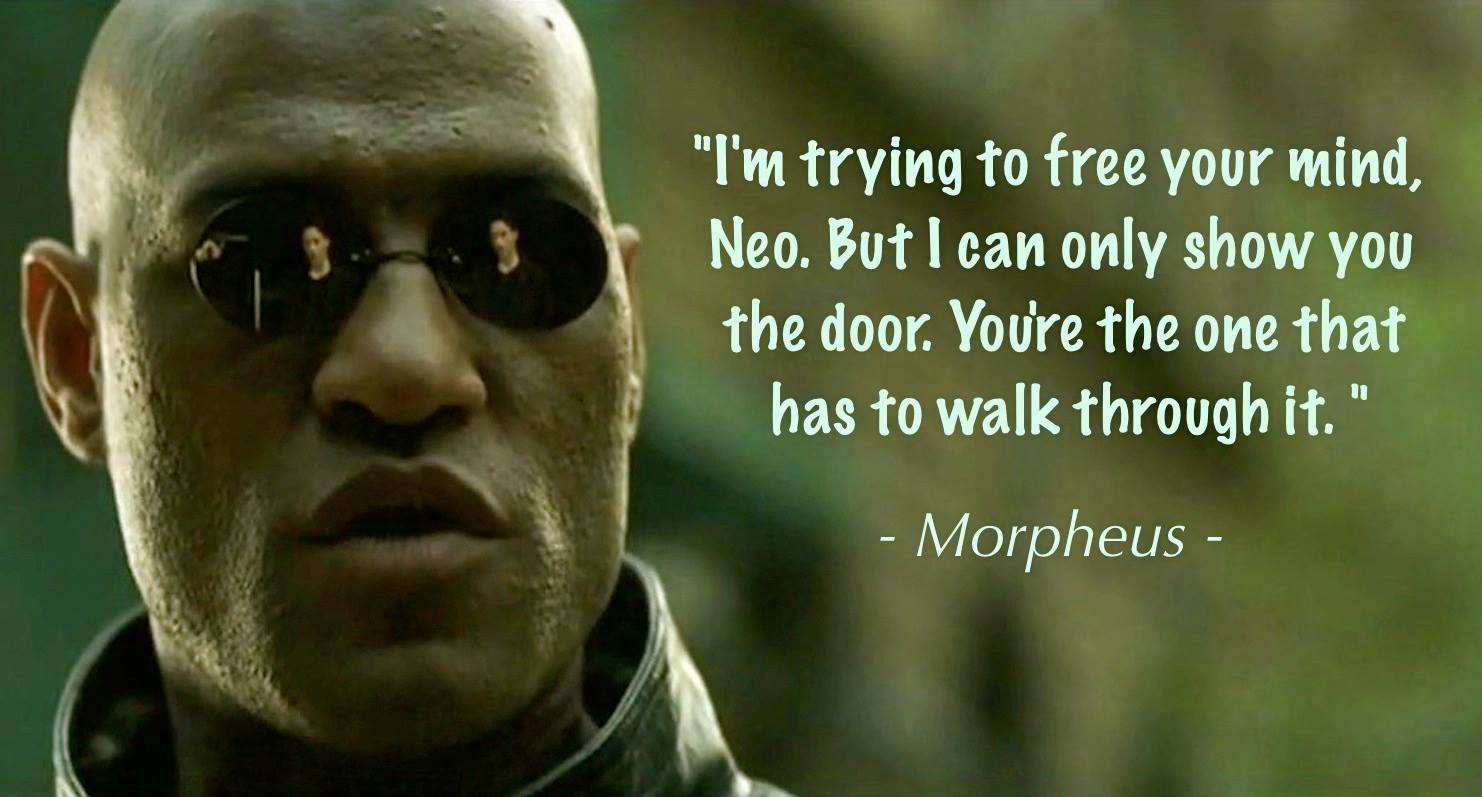


















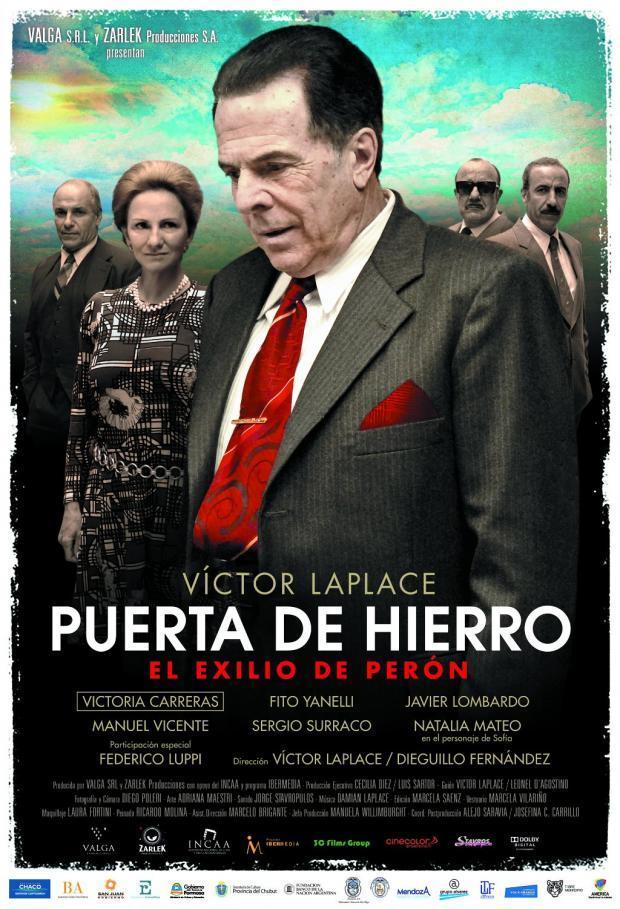





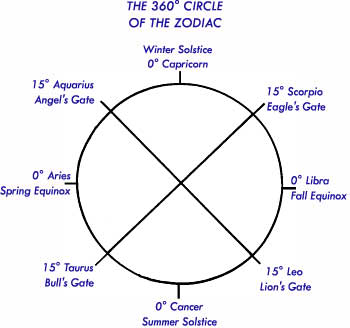

![9780425176580: The Stargate Conspiracy: The Truth About Extraterrestrial Life and the Mysteries of Ancient Egypt [Idioma Inglés] - IberLibro - Picknett, Lynn: 0425176584](https://pictures.abebooks.com/isbn/9780425176580-es.jpg)
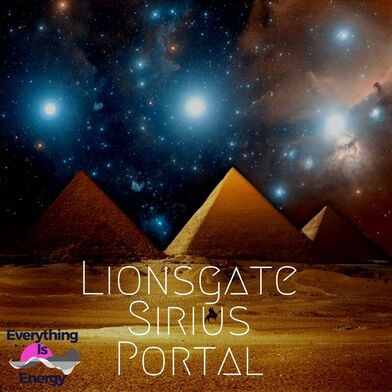
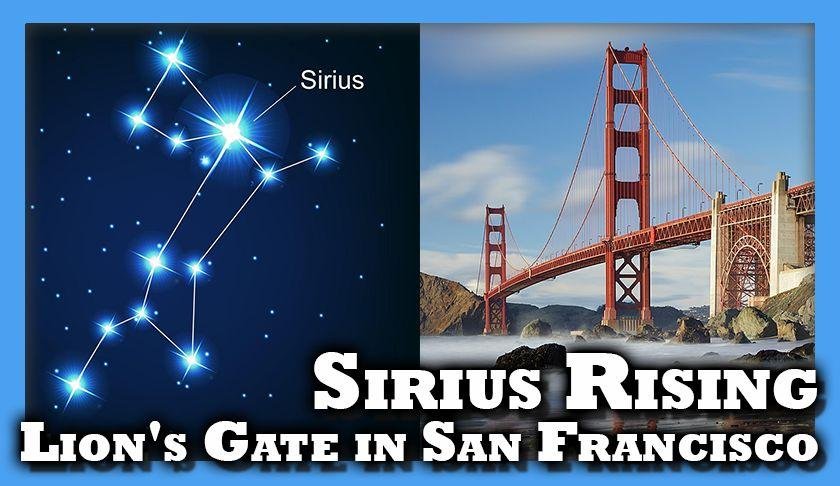




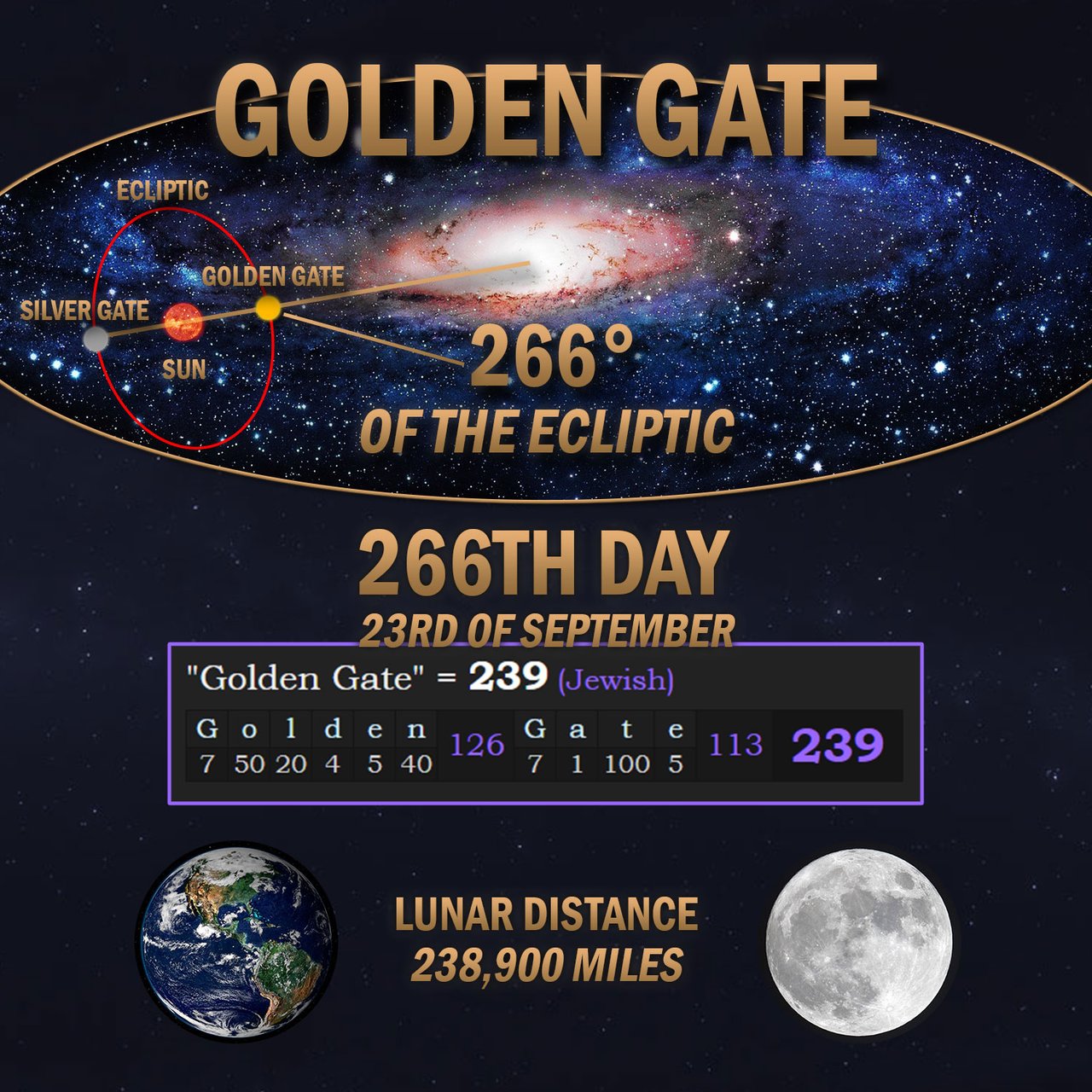




:quality(75)/arc-anglerfish-arc2-prod-elcomercio.s3.amazonaws.com/public/HTKRCDPMGREVLPMUZDYSDB3ULE.jpg) (Imagen: Andina)
(Imagen: Andina):quality(75)/s3.amazonaws.com/arc-authors/elcomercio/5f71beb8-bb6d-4743-9ed2-fc9ea6159daa.jpg)



